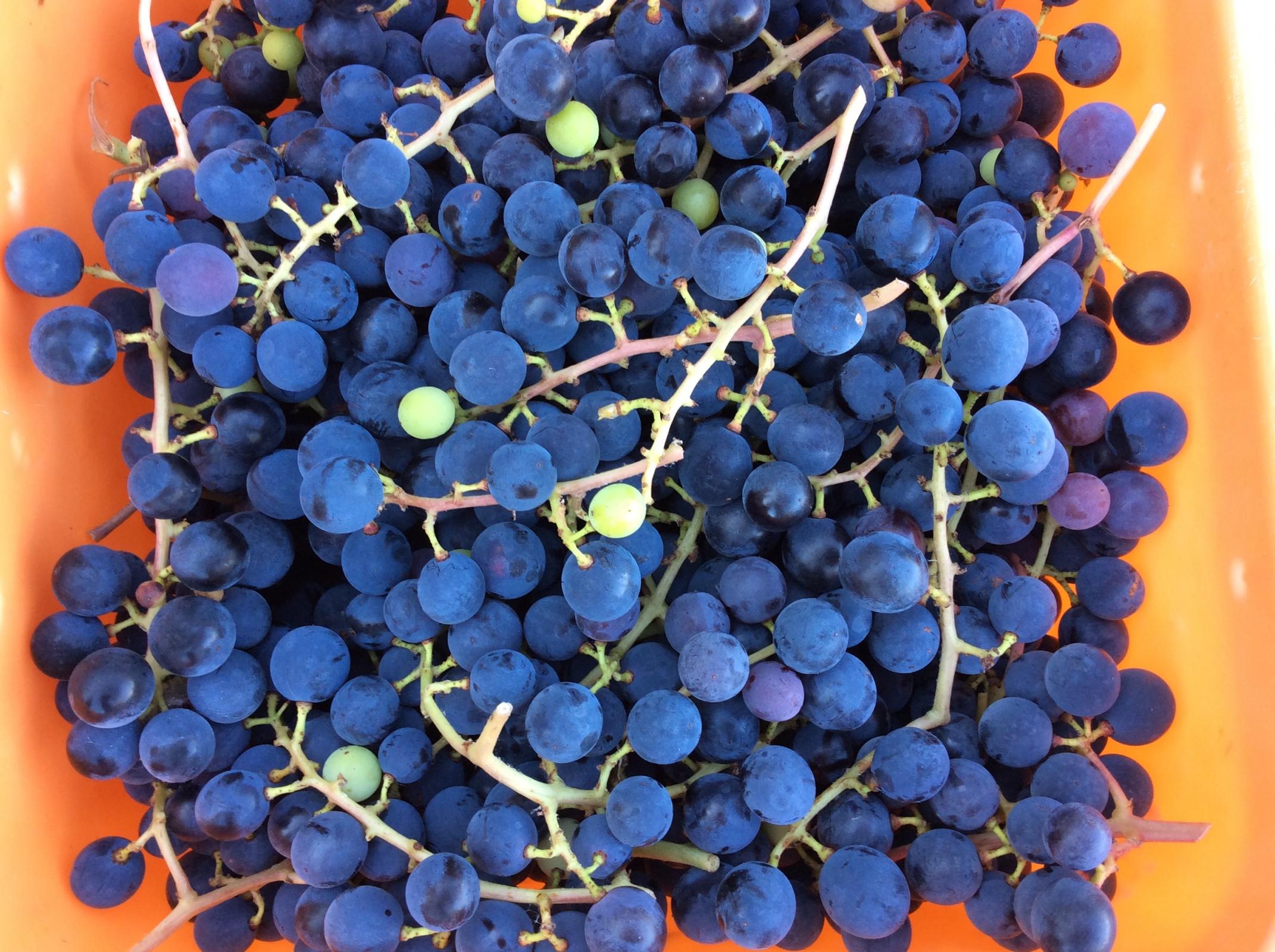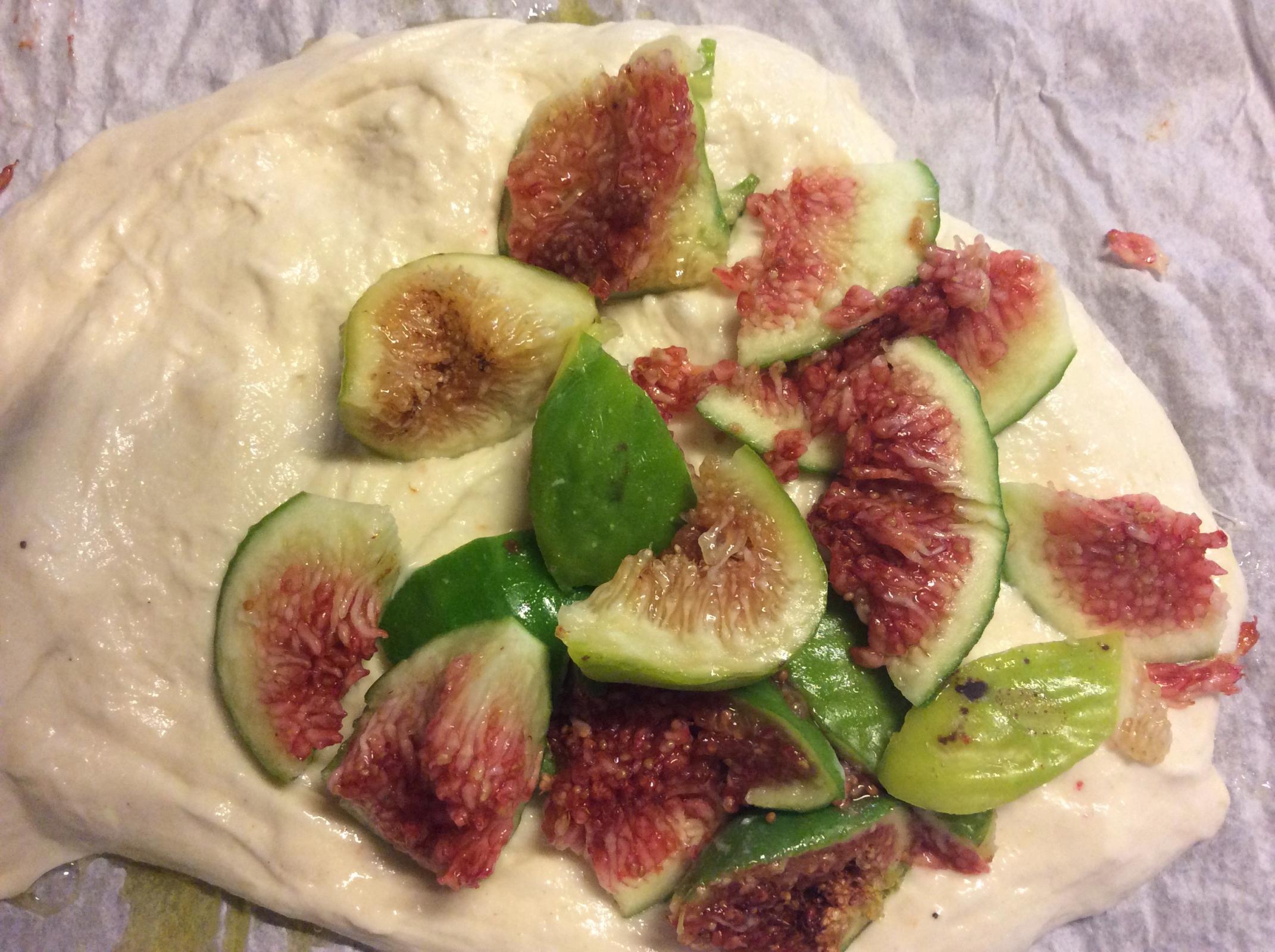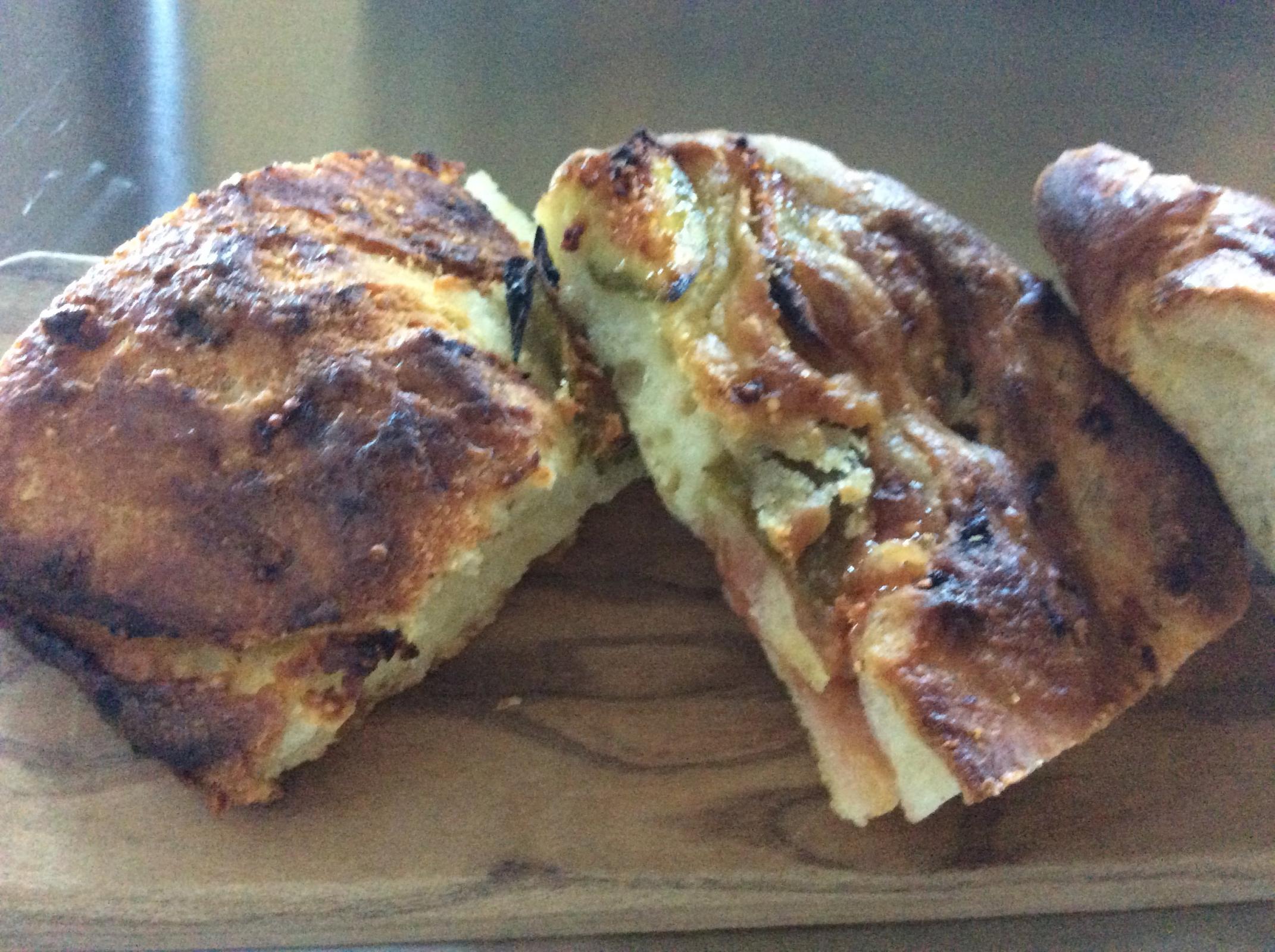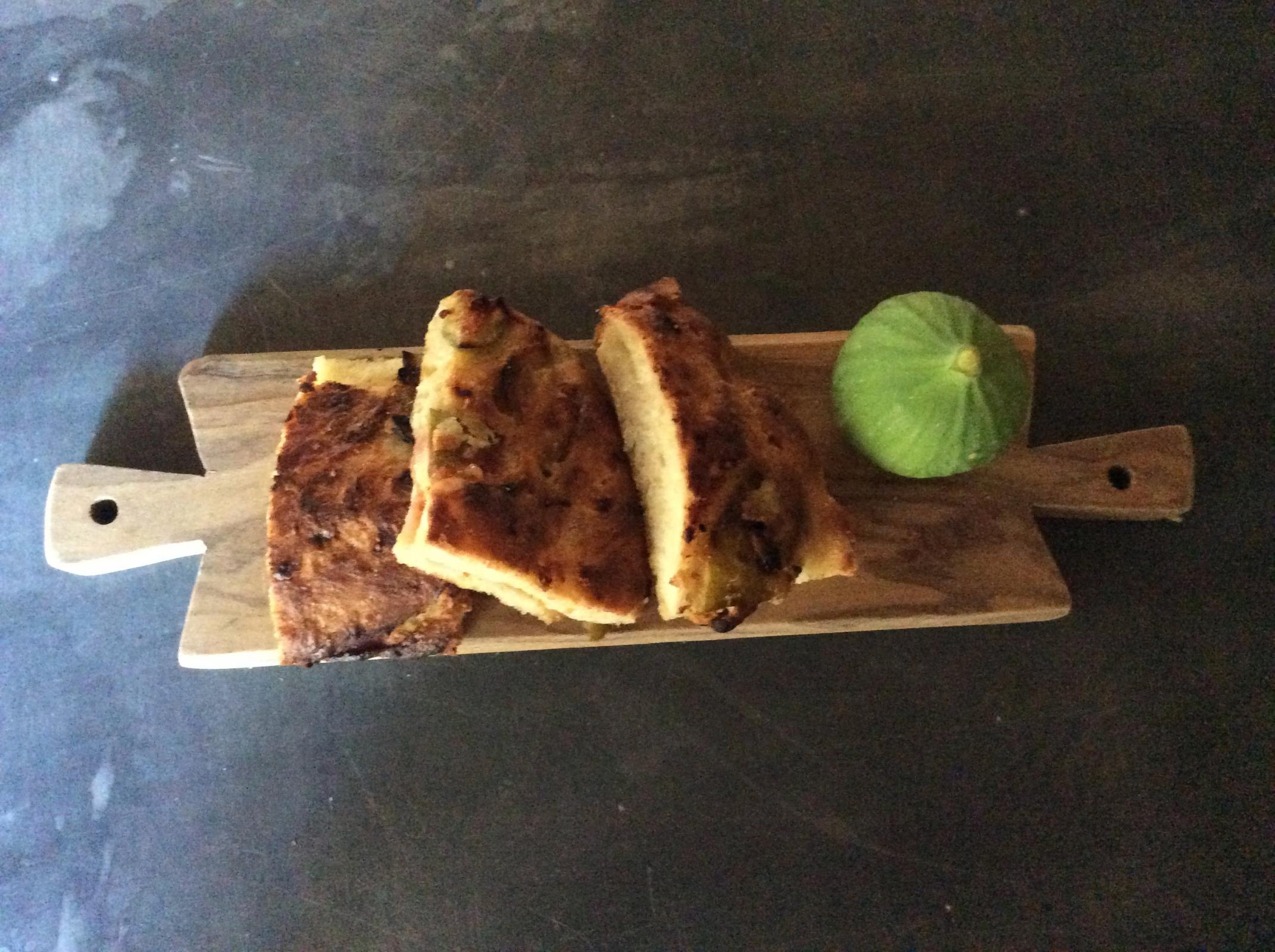





If you happen to be going to a farmer’s market this weekend you’re likely to find some fresh local grapes. Here’s a great way to enjoy them. This is my version of the delicious grape bread made every fall in Tuscany to celebrate the vendemmia (grape harvest).
Over the years I’ve refined my process. I layer the grapes into the dough now, rather than just spreading them on top, which is the usual method. This way the delicious jammy juice produced by the combo of olive oil, grapes and sugar is preserved inside the dough rather than oozing out all over, burning the crust and ruining our baking sheets. I’ve also discovered if you turn the finished schiacciata upside-down to cool on a rack the juice gets distributed evenly. As it cools it turns into a light film of grape jelly, beautifully marbled throughout the crumb, not congealed into soggy pockets on the bottom as is usually the case.
Wine grapes are traditionally used and rosemary is the classic seasoning but sometimes I use cinnamon instead, especially if I’m serving the bread for breakfast. The seeds in the grapes give the bread a delightful crunch. When our figs are in season, just before our grapes start ripening, I get a head start with a delicious fig version. Post-harvest, I use the late-harvest viogner grapes we dry into plump raisins to enjoy a raisin-studded focaccia all year round.
I use a simple straight dough (no pre-ferment or biga). If you have a favorite pizza dough recipe you could use that. I mix the dough the day before and retard it overnight in the refrigerator. Recently I’ve discovered the semolina flour from Sicily or Puglia (semola di grano duro rimacinata) produces a sunny yellow, nutty tasting crumb that is a lovely marriage with the grapes, but all purpose flour is traditional here in Tuscany. Sometimes I make schiaccata con l’uva with egg-enriched pan brioche dough. That’s very special, especially for breakfast or to serve toasted with foie gras or a chicken liver mousse.
Making this dough is a little like making puff pastry, a series of folding and stretching, but instead of butter the filling is enriched with grapes, olive oil and sugar. I spread the dough out on an oiled parchment lined baking sheet and densely populate half of it with grapes. Then I drizzle EVOO and sprinkle sugar over that, along with finely chopped rosemary or a dusting of cinnamon. I fold the other half of the dough over the grapes and repeat the stretching and folding process using up the remaining grapes, more sugar and EVOO. Then dough gets stretched, drizzled and sprinkled again before baking.
FOR THE DOUGH
- 300 grams all finely ground semolina flour (semola di grano duro rimacinata)
- 240 ml tepid water
- ⅛ tsp instant yeast
- 6 grams salt
- 1 tablespoon extra virgin olive oil
FOR THE FILLING
- a nice big bunch of red wine grapes, or if you can't find them use black concord grapes (or fresh figs or seeded raisins as described above)
- olive oil
- sugar
- finely chopped rosemary or cinnamon (optional)
INSTRUCTIONS
- The day before you intend to bake the focaccia mix all the dough ingredients together in a large bowl using a spatula. Make sure all the flour is incorporated and using wet hands form the dough into a ball. Cover the bowl with a plate and let it sit for 1 hour at room temperature.
- Using your hands, remove the ball of dough and stretch it out until it is about 8 inches long then fold it over itself two or three times until you have a package the size of the original ball of dough.
- Repeat this process two or three more times, you should notice that the dough has become quite elastic and strong.
- Oil a plate lightly and place the ball of dough on the plate, cover tightly with plastic wrap and let sit at room temperature for 1 hour before transferring to the refrigerator.
- The next day, remove the dough at least an hour before you wish to bake to let it come to room temperature.
- Preheat the oven to 200 C (400 F)
- Brush olive oil lightly over a parchment lined baking sheet and place the dough on it. Stretch the dough to form a 15 by 8 inch rectangle.
- Densely populate half the dough with half the grapes, drizzle olive oil over evenly and sprinkle with sugar. Sprinkle rosemary or dust cinnamon on top if using.
- Fold the empty half of the dough over the grapes and repeat the stretching and folding process using the rest of the grapes, more sugar and rosemary or cinnamon.
- Stretch the dough out one last time, until it is the thickness of one layer of grapes. Drizzle with more oil and dust with more sugar.
- Transfer to the oven and bake for about 35 or 40 minutes or until the focaccia is nicely browned. Check the bottom to make sure it is cooked through.
- Let the dough cool upside down on a rack so that the grape juice can penetrate the focaccia.
- Once cool, reverse the dough (dust with icing sugar if you wish) before slicing and serving.
NOTES
- You can use all purpose flour, but reduce the amount of water by 30ml (1oz)
- A version of this post originally appeared here, on my blog, in September 2015.